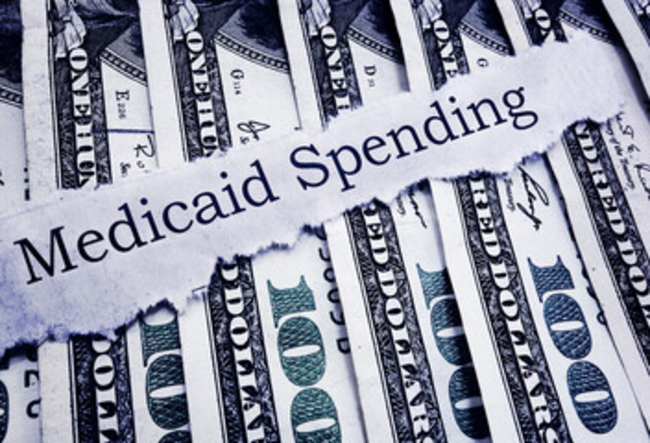Medicaid Demonstrations: Action Needed to Address New Cost Concerns
Fast Facts
Medicaid is jointly financed by the federal government and states. States may test new approaches for delivering health care services through Medicaid "demonstrations," which may include otherwise ineligible spending. Policy requires demonstrations to be budget neutral for the federal government and not raise its costs.
The federal government sets spending limits for each demonstration based on state spending data. In 2022, policy changes allowed state data to include the costs for some services that Medicaid doesn't typically pay for. This increased demonstration spending limits by billions of dollars.
Our recommendation addresses this.

A fanned-out stack of $100 bills with a torn piece of paper laid across them that says "Medicaid Spending"
Highlights
Why This Matters
Medicaid section 1115 demonstrations allow states to test new approaches for delivering services and have become a significant feature of the program. The Centers for Medicare & Medicaid Services (CMS) policy is for demonstrations to be budget neutral (i.e., not raise costs for the federal government). We have previously recommended CMS use valid methods to determine budget neutrality.
GAO Key Takeaways
Federal spending on Medicaid demonstrations nearly doubled from 2013 through 2023—the latest available data. CMS sets spending limits for each demonstration that are intended to ensure that demonstrations are budget neutral. The limits are based on projections of what Medicaid would have spent without the demonstration. The higher the projected spending, the higher the spending limit.
In 2021, CMS began requiring states to use recent spending data rather than outdated historical spending projections when calculating spending limits—a method that better ensures budget neutrality. We estimated that this reduced potential federal spending by about $123 billion for two selected demonstrations.
However, in 2022, CMS adjusted this policy and allowed spending limits to partially reflect outdated historical spending projections. This increased potential federal spending by an estimated $17 billion in three selected demonstrations.
Also in 2022, CMS began allowing spending limits to include certain costs for services to address health-related social needs, such as housing assistance. Some of these costs could not have occurred absent the demonstration because they are not allowable under Medicaid. This increased potential federal spending by almost $4 billion in five selected demonstrations and did not ensure budget neutrality.
Federal Expenditures Under Medicaid Demonstrations

Note: Expenditures are adjusted for inflation.
How GAO Did This Study
We analyzed CMS expenditure data on Medicaid demonstration spending. We reviewed CMS policy changes from 2020 through 2024 and approval documents for six state demonstrations, selected for variation in approval dates. We estimated how the changes in CMS policies would affect federal spending.
Recommendations
CMS should fully implement our 2002 recommendation to use valid methods for budget neutrality. CMS should also stop allowing costs that could not occur absent the demonstration in demonstration spending limits. CMS said it will consider this as it implements new budget neutrality requirements.
Recommendations for Executive Action
| Agency Affected | Recommendation | Status |
|---|---|---|
| Centers for Medicare & Medicaid Services | The Administrator of CMS should revise the agency's section 1115 budget neutrality policy to stop treating costs for populations or services that could not have otherwise been covered under existing Medicaid authorities as hypothetical when setting demonstration spending limits. Instead, CMS should require the costs of those populations or services to be offset by other reductions in demonstration spending. |
When we confirm what actions the agency has taken in response to this recommendation, we will provide updated information.
|
